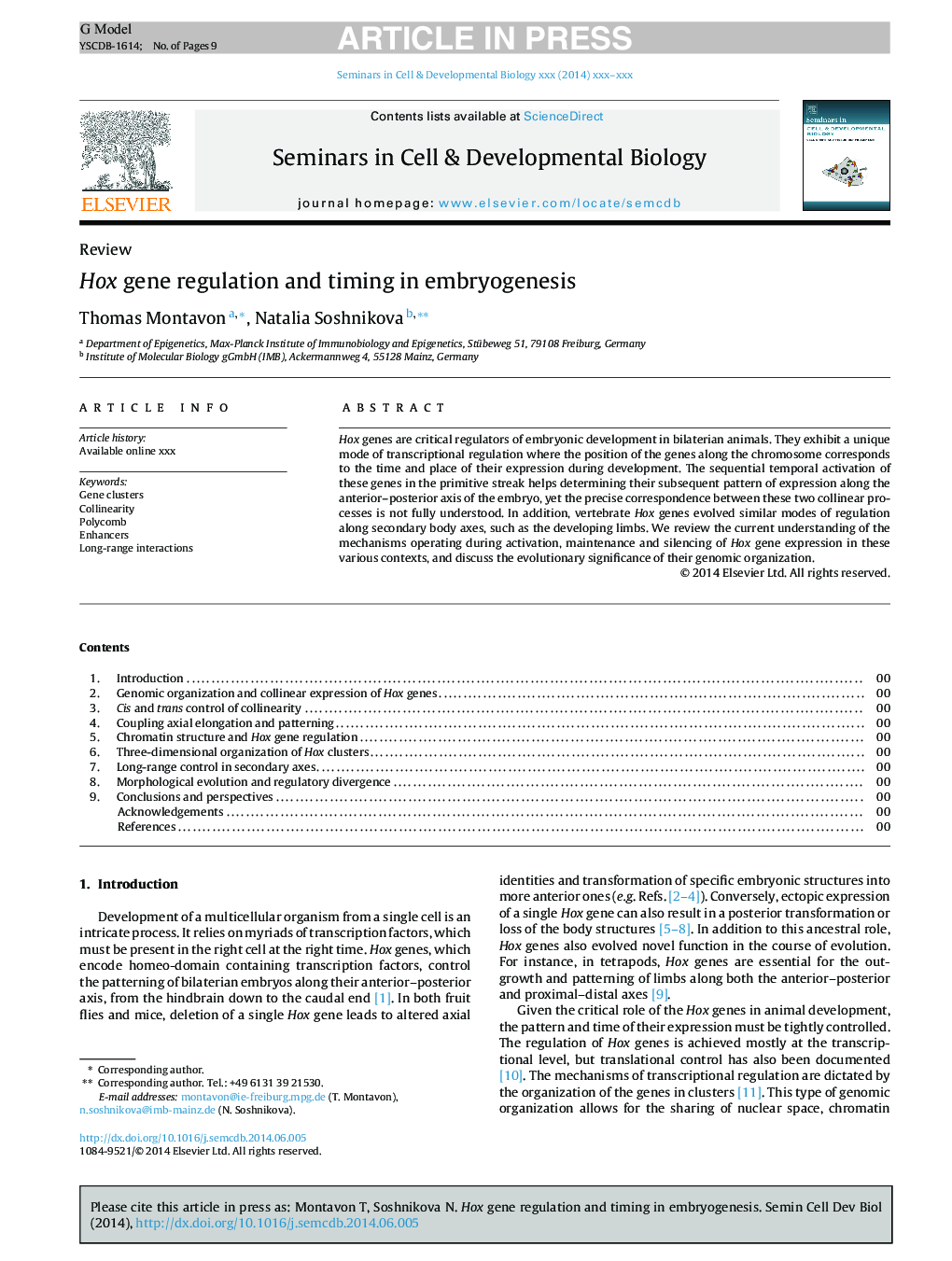| Article ID | Journal | Published Year | Pages | File Type |
|---|---|---|---|---|
| 8480608 | Seminars in Cell & Developmental Biology | 2014 | 9 Pages |
Abstract
Hox genes are critical regulators of embryonic development in bilaterian animals. They exhibit a unique mode of transcriptional regulation where the position of the genes along the chromosome corresponds to the time and place of their expression during development. The sequential temporal activation of these genes in the primitive streak helps determining their subsequent pattern of expression along the anterior-posterior axis of the embryo, yet the precise correspondence between these two collinear processes is not fully understood. In addition, vertebrate Hox genes evolved similar modes of regulation along secondary body axes, such as the developing limbs. We review the current understanding of the mechanisms operating during activation, maintenance and silencing of Hox gene expression in these various contexts, and discuss the evolutionary significance of their genomic organization.
Related Topics
Life Sciences
Biochemistry, Genetics and Molecular Biology
Cell Biology
Authors
Thomas Montavon, Natalia Soshnikova,
